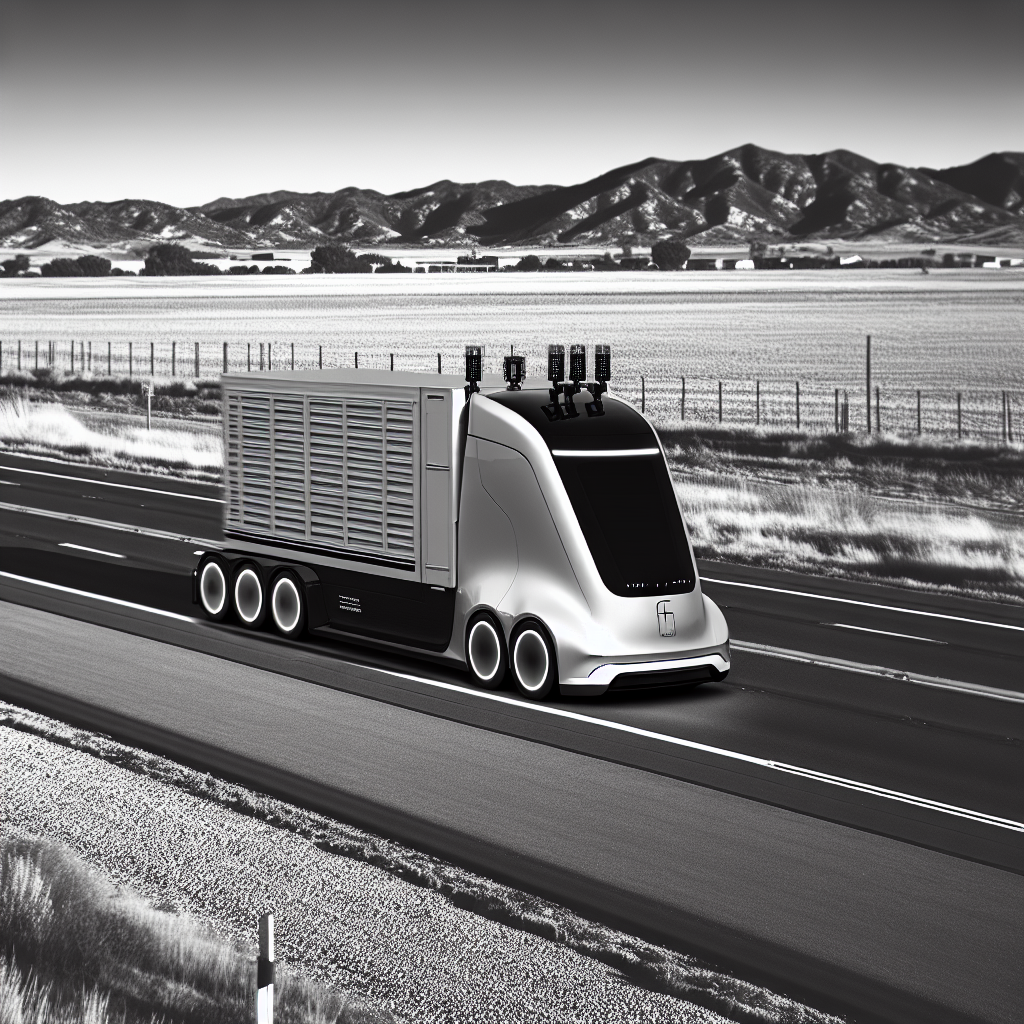Waabi to use NVIDIA Generative AI Technology for Fully Driverless Autonomous Trucking
Last month, Toronto-based startup Waabi (WABI-USD) announced its collaboration with NVIDIA (NASDAQ: NVDA) to harness the power of generative AI that advances the dream of fully driverless autonomous trucking.
Waabi’s development is based on NVIDIA DRIVE OS, an operating system tailored for AI-defined autonomous vehicles. The startup’s approach integrates two generative AI systems: Waabi World, an advanced simulator that acts as a “teacher,” and Waabi Driver, an end-to-end AI system functioning as a “student.” This combination reduces the need for extensive on-road testing, promoting a safer and more efficient autonomous driving solution.
Waabi’s progress is marked by several key milestones. The company recently completed a $200 million Series B funding round with participation from NVIDIA, Khosla, and Uber. Additionally, Waabi has partnered with logistics giant Uber Freight and launched its first commercial autonomous trucking routes in the U.S. To support these operations, Waabi has established a trucking terminal near Dallas, Texas, which will serve as the hub for its activities in the region.
Impact on the Industry
Waabi’s innovative approach is poised to revolutionize the long-haul trucking industry. By leveraging generative AI, Waabi aims to create a cost-efficient, scalable solution capable of handling diverse road scenarios safely. This technology has the potential to transform the industry, addressing current labor turnover, safety concerns, and environmental impact.
But in the long term, Waabi’s technology could extend beyond trucking to other autonomy use cases, such as robotaxis, warehouse robotics, and more. This could lead to significant advancements in various sectors, further solidifying the role of generative AI in shaping the future of transportation. But they are not alone in this endeavor.
Growing Competition
The trucking industry in the United States generates around $740 billion in revenue annually, with approximately 2.1 million truck drivers earning a median annual salary of $48,310. However, the advent of self-driving trucks poses a significant threat to employment in the industry, with estimates suggesting that up to 25% of truck drivers could lose their jobs due to automation.
There are well-known brands: Ford, Volvo, Daimler, and Tesla are all working on fully automated trucks. But the start-up highway is quickly becoming crowded. Pittsburgh-based Aurora, a company founded by former executives from Google, Tesla, and Uber, is developing self-driving technology for commercial trucks and has partnered with other trucking companies. Meanwhile, Kodiak Robotics, led by a team of autonomous driving veterans from Google, Uber, and Lyft, already delivers freight daily in Texas.
And TuSimple has successfully completed multiple long-haul test drives with their autonomous trucks, including a 2,000-mile cross-country trip. Plus.ai offers autonomous driving solutions for the trucking industry, with the goal of achieving full autonomy in the future. Gatik AI Inc. uses autonomous trucking to make regional distribution networks more efficient, and has outfitted its trucks with Goodyear’s smart tires. And Torc Robotics is partnered with Daimler to develop automated trucks in an effort to reduce accidents while transform transportation technology.
Technology and Scalability
Most self-driving trucks rely on advanced sensors such as Lidar, radar, cameras, ultrasonic, and GPS to navigate. These sensors work together to provide a comprehensive view of the environment, enabling the trucks to make decisions independently. A successful self-driving truck system will likely feature multiple sensors to ensure reliability and accuracy.
While Waabi’s solution is promising, several questions remain. The trucking industry is on the cusp of a significant transformation with the advent of autonomous technology. Proponents of automation argue that it will improve efficiency and reduce costs, but the reality is that this technology could pose a significant threat to the livelihoods of millions of truck drivers across the United States. The impact of automation on long haul trucking operator-hours is a pressing concern, as highlighted in a recent study by Nature.
The Society of Automotive Engineers (SAE) defines six levels of driving automation, ranging from no driving automation (level 0) to full driving automation (level 5). Therefore, the type of technology each solution employs can determine what level of autonomy each vehicle possesses, thereby affecting its scalability. For example, there is the issue of maintenance and repairs. Currently, truck drivers do not perform significant maintenance and repairs on their trucks. Instead, they call for assistance and trucking companies send out repair teams or arrange for a repair appointment at the nearest service station. Autonomous trucks will need to be able to send out distress signals and get assistance when needed. Additionally, there is the question of liability in collisions, as a driver might not be present to take responsibility.
Workforce Impact
The introduction of autonomous trucks will inevitably lead to job losses. Estimates state that roughly over 4 million jobs will be lost as a result of growing autonomous truck economy, when taking into considering the full supply chain workforce. Half of those will be actual truck drivers. The trucking industry in the United States generates around $740 billion in revenue annually, and there are approximately 2.1 million truck drivers in the country. The median annual salary for American truck drivers is $48,310. The global self-driving truck market is projected to grow at a compound annual growth rate of 10.4 percent from 2020 to 2025, reaching a market size of about $1.7 billion by 2025.
Today, the trucking workforce accounts for 6% of the total U.S. workforce. Although the path to fully autonomous trucking is likely to be a gradual one, but it will still have significant impacts on the industry and the people who work in it. The transition will not be without challenges.
How will regulatory frameworks adapt to accommodate fully driverless autonomous trucking? Unions such as the Teamsters and the United Auto Workers are actively addressing these challenges. The Teamsters are advocating for a bill prohibiting driverless trucks, while the United Auto Workers are fighting for better wages and job security amidst the industry’s shift to electric vehicles. In San Francisco, robotaxis have expanded their operations, triggering objections from city officials and unions over potential disruptions to emergency services and public transit.
Truck drivers are at the forefront of these rapid and profound changes, which aim to enhance efficiency and sustainability but also pose threats to jobs. The Biden administration’s substantial investment in transitioning to electric vehicles includes provisions for union wages. However, the emergence of “green jobs” often offers lower pay and inferior working conditions compared to traditional fossil fuel-related positions. Additionally, the advent of autonomous vehicles encroaching on tasks previously performed by humans raises concerns among labor leaders about impending job losses or diminished roles for workers.
Waabi’s use of generative AI for fully driverless autonomous trucking marks a significant step forward in the development of autonomous vehicles. As this company, and others, continue to collaborate with AI providers and other industry leaders, the potential for transformative change in the transportation sector grows.






